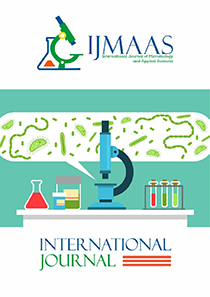Evaluation of Fungi Associated With Fungal Diseases of Yam (Dioscorea species) Tubers in Storage
Vol. 3, Issue 3, 2024
KEYWORDS
Yam (Dioscorea species), food security, Aspergillus niger, Rhizopus stolonifer, fungal diseases, storage rot.
Abstract
Yam (Dioscorea species) is among the most important food in the world and contributes to food security in Nigeria. This study was conducted to evaluate fungi associated with fungal diseases (storage rot) of white yam (Dioscorea rotundata), yellow yam (Dioscorea cayenenesis) and water yam (Dioscorea alata) purchased from Ariaria Market Aba, Abia State, Nigeria. Nine deteriorated yam tubers, three each of the Dioscorea species were examined and used for the isolation, identification, and characterization of the fungi. Standard mycological and agar well diffusion methods were used to isolate the fungi causing rot development in yam. Also, nine healthy tubers, three each purchased from the same market were also used for the pathogenicity test using fungi which were previously isolated from the deteriorated yam tubers. Pathogenicity test was carried out by inoculating healthy yam tubers at the head and tail with pure culture of each fungal isolate. Six fungi identified included Aspergillus niger, Aspergillus flavus, Aspergillus fumigatus, Penicillium chrysogenum, Rhizopus stolonifer and Fusarium oxysporum. Fungi with the highest percentage frequency were A. fumigatus from D. alata (57.1%), A. flavus from D. rotundata (50%), A. niger and F. oxysporum from D. alata (45.5%), A. fumigatus from D. rotundata (42.9%), while the least were A. flavus from D. cayenensis (8.3%), A. niger and F. oxysporum from D. cayenensis (18.2%). Pathogenicity test showed these fungi to be pathogenic agents of the rot disease. Fungal rot worsens post-harvest storage losses in yams by reducing their shelf life, market value or economic loss and palatability. Therefore, yam should be handled with care to avoid mechanical injuries which may pave way for the entry of the pathogens.
Current: Vol. 4, Issue 1, 2025

Call for papers
The International Journal of Microbiology and Applied Sciences warmly welcome your valuable articles for publication.
